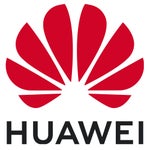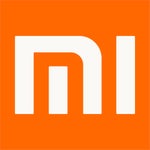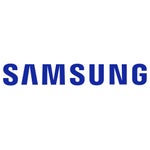News
Apple's Foldable Phone Set to Launch in Late 2026: Samsung Panels Ordered, Production Insights Revealed
Apple's Foldable Phone Set to Launch in Late 2026: Samsung Panels Ordered, Production Insights Revealed
The tech world is abuzz with anticipation as Apple gears up to enter the foldable smartphone market, with its first foldable iPhone expected to launch in late 2026. After years of speculation, Apple is making a strategic move that could disrupt the foldable phone landscape, traditionally dominated by players like Samsung and Huawei. Here’s a deep dive into what we know so far about Apple's foldable iPhone and what this could mean for the future of smartphones.
What We Know About Apple's Foldable iPhone
Apple’s journey into foldables comes at a time when the foldable phone market is still in its early stages. While Samsung has already introduced multiple iterations of foldable devices, and companies like Huawei have made their mark, Apple’s approach seems more measured and strategic. According to insider reports and supply chain insights, Apple is planning to release its foldable iPhone by the end of 2026, with production ramping up in the second half of the year.
Production Timeline and Key Milestones
-
Foxconn's Role: Foxconn, Apple's trusted assembly partner, is expected to kick off the foldable iPhone project in Q3 2025 or early Q4 2025.
-
Mass Production: Large-scale production is anticipated to begin in the second half of 2026.
-
Panels Ordered: Apple has already ordered 7-8 million foldable panels from Samsung Display, signaling that it’s preparing for a substantial launch.
This timeline suggests that Apple is taking its time to refine the technology and ensure that its entry into the foldable market will be polished and well-positioned.
Key Features of the Foldable iPhone: What Sets It Apart?
Apple’s foldable iPhone isn’t just about folding screens it’s about bringing new technology and innovations that could set a new standard for foldable devices. While most of the details remain under wraps, several key features have surfaced:
Liquidmetal Hinge
One of the standout features of Apple’s foldable iPhone could be its liquidmetal hinge. This hinge technology, which Apple has been working on for years, could provide enhanced durability and a smoother fold compared to the current foldable devices on the market. If successful, this could address one of the major pain points for foldables fragile hinges that wear out over time.
Samsung Display Partnership
Apple has partnered with Samsung Display for the foldable panels, a smart move given Samsung’s dominance in foldable OLED technology. This partnership will ensure that Apple’s foldable iPhone has a display that’s not only flexible but also durable and capable of offering a high-quality visual experience.
The Market Impact: Will Apple Disrupt the Foldable Space?
Apple’s foldable iPhone is expected to shake up the foldable smartphone market. While companies like Samsung and Huawei have been at the forefront of foldable technology, Apple’s entry into the market could bring these devices into the mainstream.
Projected Production and Lifespan
Apple is aiming for a production target of 15-20 million units over the next 2-3 years. This suggests that Apple views foldables not just as a niche product but as a future mainstream category. The extended product lifecycle (2-3 years) also indicates that Apple plans for steady growth in the foldable market rather than a one-time launch.
Potential to Drive Down Prices
One of the biggest obstacles for foldable phones has been their high price. Devices like the Samsung Galaxy Z Fold 5 can cost over $1,800, which limits their appeal to a broad audience. Apple’s entry into the foldable market could lead to more competitive pricing, particularly as it leverages its vast supply chain capabilities and economies of scale.
The Future of Foldables: What’s at Stake?
Apple's foldable iPhone isn’t just about entering a new product category; it’s about shaping the future of smartphones. Here are a few ways it could impact the industry:
-
Pushing Innovation: Apple’s entry will likely force competitors to innovate further, improving durability and screen quality.
-
Ecosystem Integration: Apple’s reputation for seamlessly integrating hardware and software could set a new standard for foldable devices, offering features like advanced multitasking, app optimization, and smoother transitions between different screen modes.
-
Mainstream Adoption: With Apple’s brand power and loyal customer base, foldable smartphones may finally gain the mass-market appeal that has eluded other manufacturers.
Frequently Asked Questions
1. When will Apple release its foldable iPhone?
Apple's first foldable iPhone is expected to launch in late 2026. Mass production is scheduled for the second half of 2026.
2. What are the key features of Apple’s foldable iPhone?
Apple’s foldable iPhone will likely feature a liquidmetal hinge for enhanced durability and a partnership with Samsung Display for the flexible foldable panel.
3. How many foldable iPhones does Apple plan to produce?
Apple is aiming for 15-20 million units over the next 2-3 years with 7-8 million foldable panels already ordered from Samsung Display.
Related Articles
Conclusion: Apple’s Bold Step into the Foldable Future
-
Apple’s foldable iPhone is set to redefine the foldable smartphone category.
-
Apple is positioning itself to make a significant impact on the market with innovations like the liquidmetal hinge, a powerful partnership with Samsung Display, and a carefully planned production strategy.
-
The production target of 15-20 million units over 2-3 years reflects Apple’s commitment to the long-term success of foldables.
-
While the foldable phone market has faced challenges, Apple’s careful approach could make foldable smartphones more mainstream and competitive.
-
Apple's first foldable iPhone may be the device that finally shifts foldables from a niche market to the next standard in mobile technology.












